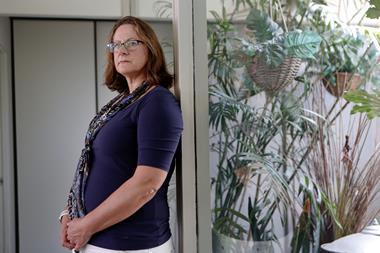Figures just out reveal that the US National Science Foundation (NSF) received 54 allegations of research misconduct in the 2022–23 financial year. Thirty-three were allegations of plagiarism while 21 were of falsification or fabrication. They closed 15 cases, 10 alleging plagiarism, one of falsification/fabrication and one that was a mixture of the two.
Similar trends exist in previous years: in the 2021-22 fiscal year, for instance, the NSF received 53 such complaints – 37 alleging plagiarism and 16 alleging falsification or fabrication.
What’s more, researchers funded by the NSF are around twice as likely to be found guilty of research misconduct than those funded by the US National Institutes of Health (NIH), according to past research. Nine out of 10 NSF researchers investigated for research misconduct are ultimately found guilty, compared with more than 40% of those funded by the NIH.
Although the NIH awards four times more grants than the NSF, the latter reviews around two-and-a-half times more research misconduct reports.
That’s according to a 2019 study, which also found that nearly 84% of NSF offenders are guilty of plagiarism compared with just under 5% of those funded by the NIH. Between 2008 and 2015, the NSF conducted an average of 83 investigations per year, concluding that more than a quarter are guilty. On average, around 84% of those were due to plagiarism.
‘I found that fascinating,’ said Donald Kornfeld, an emeritus professor of psychiatry at Columbia University who co-authored the 2019 analysis, speaking of the discrepancy in the rates of plagiarism at the NSF and NIH in 2021. (Kornfeld passed away in July 2022.) Kornfeld didn’t think scientists of one kind are necessarily more honest than another, but attributed the marked difference to the different methods and missions of the scientists being funded by the two agencies.
For instance, the NSF usually funds physicists, mathematicians and chemists, where, as Kornfeld puts it in his paper, more emphasis is usually placed on the ‘products of the intellect and their ownership’.
By contrast, the NIH supports more clinical studies where the focus is on trial data and subsequent analyses. Its funded research results in around 32 misconduct probes per year, with around half of them finding that misconduct occurred. Only around 5%, however, are due to plagiarism. NIH investigations are carried out by the US Office of Research Integrity (ORI). Out of the handful of probes that result in a guilty finding, around 80% are a result of manipulation of biomedical images.
The NSF investigates misconduct allegations on all grant applications, regardless of whether the proposals were funded or not. When allegations surface, institutions carry out the probe, with oversight from the ORI for NIH-funded proposals and NSF for applications awarded by them.
One key difference between the NSF and ORI, however, is that the former also has an Office of Inspector General (OIG), who has law enforcement powers and can provide independent oversight of the agency’s inner workings. Another key difference is that the ORI names all researchers found guilty of research misconduct and lists the sanctions issued against them – including bans on federal funding and serving on peer review committees – while the NSF sometimes keeps the culprits’ identities confidential.
‘Any research misconduct finding that results in a government-wide debarment is reported on the System for Award Management website and available to the public.’ In 2018, for example, seven out of the 14 research misconduct findings from the NSF included debarments.
The NSF OIG receives hundreds of allegations of various forms of wrongdoing including civil, criminal and administrative every year. In recent years, the NSF OIG has opened around 35 investigations per year into research misconduct, just over a dozen of which turn out to be guilty findings.
‘We receive more allegations of plagiarism than falsification or fabrication,’ an NSF OIG spokesperson says. ‘NSF OIG conducts investigations, identifies facts and makes recommendations to NSF. We do not adjudicate the matter or make findings of research misconduct.’ When offences turn out to be questionable research practices but not serious enough to equate to misconduct, the agencies send researchers warning letters.
Kornfeld’s analysis found that trainees were seven times more likely to be found guilty of research misconduct in probes by the NIH than the NSF. The opposite trend seems to exist at the NSF, however.
Between 2003 and 2010, there were nearly twice as many NSF-funded principal investigators and co-investigators found to have falsified or fabricated data compared with postdoctoral fellows and doctoral students, according to a 2016 paper that studies the prevalence of falsification and fabrication but not plagiarism. Whereas past research has shown that there is a significantly higher chance of falsification and fabrication among graduate students and other junior research staff who are probed by the ORI, compared with professors at any level.
Robert Bauchwitz, a biomedical research scientist and a certified research fraud examiner who co-authored the 2016 paper, speculates that senior faculty in the biomedical sciences may be less likely to be found guilty of falsification and fabrication than in the physical sciences due to additional oversight the NSF is given by the OIG. Still, he stresses, there may be deeper flaws in how research misconduct cases are handled in the US, regardless of whether there is oversight from the OIG or not.
‘It might be asked whether an OIG would prove to be significantly more resistant to political pressures than ORI has apparently been,’ Bauchwitz says. ‘At least OIG’s mandate is probably more consistent with those of professional fraud investigators.’
Bauchwitz thinks that the ORI and the NSF OIG should actively keep tabs on why research institutions dismiss allegations of research misconduct involving research funded by the NIH or NSF.
The solution would include retaining records of allegations and introducing government-recognised auditing standards, which would be ‘a significant step forward in addressing conflicts of interest involving governmental agencies and the entities they oversee’, Bauchwitz says. ‘At present, however, sufficient data do not appear to be retained to allow effective audit of the handling of most allegations.’












No comments yet